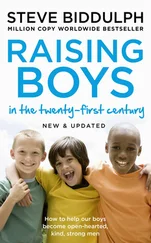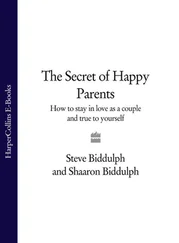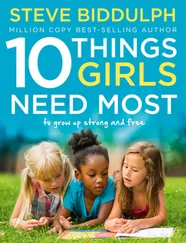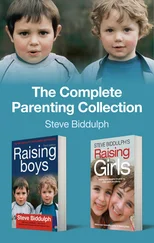Over the next few weeks, Genevieve and Justin did have a kind of debate about this. He basically gave his own ultimatum, in response to hers, and there was a real testing of wills. Justin knew plenty of girls who, though not quite as interesting or special as Genevieve, were willing to offer him sex, and in the end, he ‘walked’. Genevieve had known this was a real possibility, but that did not prevent her from feeling crushed. She was an open-hearted girl, almost totally without hardness or shell, and she took a long time to heal. But she did heal, and six months later, when Justin phoned to try to get back together, she was kind but clear in her refusal. She had moved on.
When I was young I loved to travel and live in remote places. From tiny villages in Papua New Guinea to the slums of Calcutta in West Bengal. When I returned home, I was always struck by this remarkable thing: people living in tough places were happier. Life in these places was hard, but the locals still managed to laugh and be warm to each other. (When I came back to affluence, everyone seemed miserable.) The experience convinced me: we are supposed to be happy . We are not meant to be depressed. Especially not at 15 years of age.
Girlhood is supposed to be fun , with friends young and old, adventures in young love, mastery of new skills and abilities. Its dramas should be dramas of learning and growing, not being battered and damaged.
Compared to how girlhood should be, it’s clear something has gone badly wrong. Millions of parents are asking, why are our daughters so stressed? What should we do, so that their lives turn out well? As you will soon see, there is plenty that we can do.

Part One

Chapter 1
Creating a Total Girl
Two-year-old Mollie lifts a Tonka truck high in the air and is about to smack it down on her friend Jemima’s head. Even at two, she knows this is not really in the True Spirit of Playgroup, so she glances towards where her mother is watching to see how it might go down. Her mum has seen it all and is urgently flashing her a ‘don’t you dare’ frown. Ever … so … slowly, Mollie lowers the truck to the carpet and goes back to crayoning. Jemima remains blissfully unaware that anything has happened and goes on humming to herself while holding firmly onto the only yellow crayon.
Ten-year-old Elise looks at her computer screen, and sees the message bagging one of the girls in her class, a girl who is already shy and insecure. It’s mean and personal, and one of her own friends just posted it. Elise chews her top lip so hard it leaves a red mark. She hates bullying, but how can she intervene and not make enemies? She heads downstairs to talk to her mum.
Fifteen-year-old Samantha pauses during the maths exam, draws a deep breath and frowns. She has almost finished, with loads of time to spare. If she keeps going, she will probably top the class; she likes maths and always does well, but then she will be seen as a ‘brain’, which is highly uncool, especially with boys. She knows she can just stop now and leave out the last couple of questions. Nah! she exclaims to herself, then worries if she said that out loud? Nobody seems to have noticed. She gets on and finishes the exam.
Girlhood is a lot of fun, for parents and for girls themselves, but it also has its intense times. At each stage of their growing up girls have to deal with difficult decisions. They get confused and make mistakes, but eventually they learn and grow, and out of all this they become capable and strong adult women.
For you as their parent, it helps to have a map of the country of childhood, so that you know what to expect and what to do. The map in this book is drawn from the latest findings in child development and neuroscience, family therapy and parenting education, but it also comes from talking to mothers, fathers and teachers in many countries. I never quite trust experts, unless what they say matches my own heart and passes the test of common sense. That comes from talking to lots of people. Eventually, the map becomes clearer. You feel like you know where you are.
The Five Stages of Girlhood
While each girl is unique, there is still a journey that all girls have to make to grow up well. Girls seem to be different to boys in the stages they go through, and the ages at which they happen. In the chapters to come, you can look up the age of your daughter and dive into more detail about what is happening for her. But first it’s good to get the big picture and see where you are …
Stage 1: Security – Am I safe and loved? (birth–2 years)
Human babies are the most dependent babies on Earth. Born totally defenceless, babies instinctively know that the adults around them have to love them, or they may not give them proper care. It’s not enough just to be fed and clothed; machines could keep a baby alive, but she would not develop intelligence or kindness, she would be a very strange being indeed. It’s through her parents comforting her tenderly, singing and talking to her, jiggling and tickling and loving her, that a baby girl comes fully alive, and decides that life is good. In this situation her emotional as well as her physical needs are responded to. Out of all this, she makes a fundamental decision about life: I am loved and safe . And she carries that inside her, always.
Stage 2: Exploring – Is the world a fun and interesting place? (2–5 years)
This stage is when a girl learns to be confident and interested in the world around her, to be smart and creative. It builds on the secure feelings from Stage 1; if people are going to stay close and care for me, I can relax and check out the toys, play in the garden, toddle out across the grass, mess about with dirt and stones and leaves.
Babies who don’t feel securely attached to their mum do not explore very much, they are too afraid Mum or Dad will desert them.
This is the age when your daughter can be shown how to paint, poke, build, create and enjoy the world of things, animals and people. If the people who love her share some of these activities with her, she will pick up on their enthusiasm and pleasure in making and doing. Her brain becomes permanently switched on to learning . You will have taught her that life is an adventure. Strange, new and challenging things will be a joy for her for the rest of her life.

Stage 3: People skills – Can I get along with others? (5–10 years)
Other children, other adults, as well as Mum and Dad, brothers and sisters, can be difficult but are mostly fun. Your daughter finds that she can have better fun by sharing a little, giving way a little, co-operating and playing together, than if she is just on her own. This isn’t possible until about three or four years of age, and even then it’s hard. But by learning first from Mum or Dad, and then other people, she can work out that she is not the centre of the universe . Other people have feelings too.
Right through primary school, this most complex of skills – valuing yourself, but also valuing others and treating them with respect – is gradually being learned. Again, it builds on the earlier stages: being treated kindly, you grow kind; being treated sensitively, you grow empathy; being treated honestly, you grow honest.
Читать дальше















